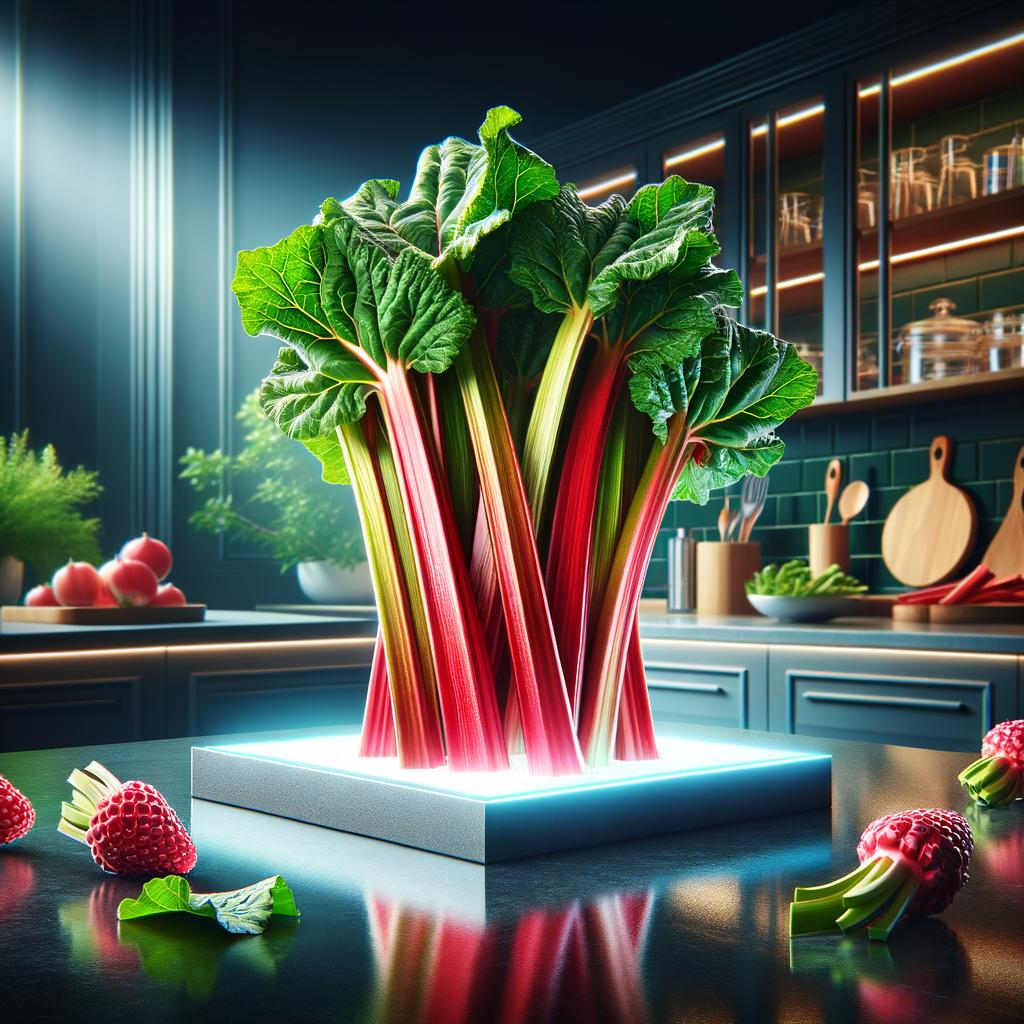Rhubarb

Description
Rhubarb, a perennial plant with a unique culinary profile, is often considered a fruit, though it is technically a vegetable. Its appearance is striking, with long, thick stalks ranging in color from green to vibrant red, similar to celery but with a crimson blush. The texture of rhubarb is crisp and fibrous when raw, but it softens beautifully when cooked, yielding a tender, melt-in-your-mouth experience. As for its flavor, rhubarb is famously tart, with a slight sweetness that is often enhanced in recipes with the addition of sugar or other sweeteners. What sets rhubarb apart from other ingredients is its dual nature; it can be both the star of a dish or a supporting player, providing a tangy counterpoint to sweeter flavors.
Primary Uses
Rhubarb is versatile and finds its way into a variety of dishes. It is most commonly used in sweet applications like pies, crumbles, and jams, where its tartness is balanced by sugar and it often pairs with strawberries. However, it also shines in savory dishes, where it can add a refreshing acidity to meat dishes or grain salads. In addition to its culinary uses, rhubarb has been used in traditional Chinese medicine for its supposed digestive benefits.
History
Rhubarb has a rich and fascinating history. Originating in Asia over 2,000 years ago, it was initially cultivated for its medicinal properties. It wasn't until the 18th century that it began to be used as a food ingredient in England and America. The plant's popularity has waxed and waned over the centuries, but it has always maintained a certain romantic allure. There's something about its vibrant color and unique flavor that captures the imagination. One interesting piece of folklore is that in the 1940s, a New York court declared rhubarb a fruit rather than a vegetable, simply because it was commonly used as one.
Nutritional Information
Rhubarb is not only a delicious ingredient but also a nutritious one. It is low in calories but high in fiber, making it a good option for those watching their weight. It also contains vitamin K, which supports bone health, and vitamin C, an antioxidant that helps protect the body from damage by free radicals. It has a higher calcium content than other vegetables, though it's important to note that the oxalic acid present in rhubarb can make it harder for the body to absorb this calcium. When compared to similar ingredients like berries or other tart fruits, rhubarb holds its own in terms of nutritional value. However, it's worth noting that because rhubarb is often prepared with added sugars, it's best to consume it in moderation.

